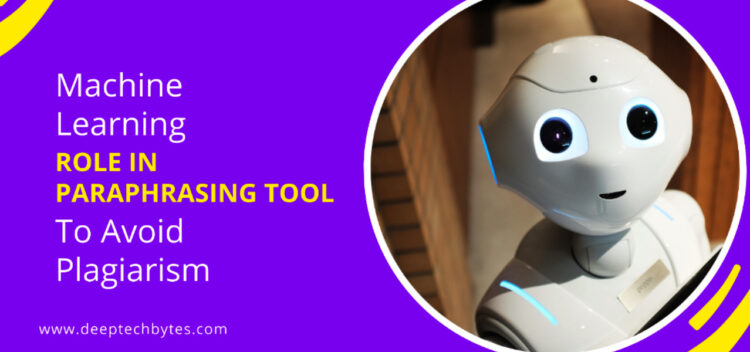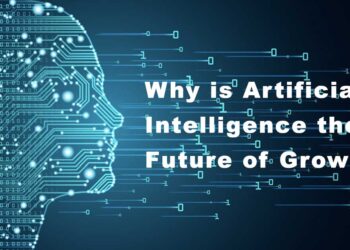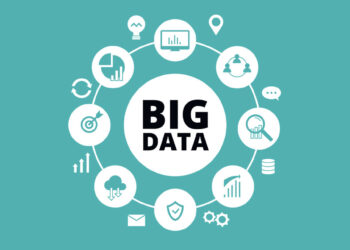AI and ML are two of the critical pillars of paraphrasing tools. So, how exactly does it work in avoiding plagiarism?
Paraphrasing tools are a pillar of content creation nowadays. Their usage is extensive, from helping writers revamp content to repurposing text for deviating goals. However, one everyday use of such tools is to avoid or remove plagiarism.
And one common aspect that every paraphrasing tool uses to get there is machine learning and artificial intelligence. Often shortened for AI and ML, both these aspects are everywhere in content-related tools. But how exactly do they both work in a paraphrasing tool?
Furthermore, how exactly do they avoid plagiarism and render content original? To understand that, we must understand what these elements of modern technology are. Then, let’s analyze their exertion in paraphrasing tools and avoiding plagiarism.
What Is AI?
AI or artificial intelligence is the term used for scientific research and computing that’s used to mimic human intelligence. The word first popped up way back in the 50s when scientists tried to merge various fields, such as:
- Mathematics
- Physics
- Engineering
- Economics
- Astronomy
All these elements combined gave computers a sense of the basic programming of human brains. Nowadays, AI is a standard tool in every household. The primary example is that in your very phone, i.e., voice searches or something as familiar or overlooked as photo gallery categorization.
Even facial recognition is one central element of AI. Many homes and workspaces rely on AI’s branch, IoT, or the internet of things.
What Is Machine Learning?
Machine learning is one of the critical branches of artificial intelligence. It’s a remarkable aspect of machines understanding human behaviors, languages, and written text to analyze user input. But, the thing that makes machine learning interesting is its self-taught capabilities.
How exactly does it do that in paraphrasing? By taking four significant steps:
- Gathering enough data about the input
- Preparation or making of models, i.e., paraphrasing specific terms, synonyms, etc.
- Training the core and evaluating further changes
- Production of content, i.e., writing new based on the older data
These are the various essential aspects that machine learning employs in a paraphrasing scenario. Not only does it analyze the content’s intricacies, but it also executes the paraphrasing aspect.
Three Primary Ways AI and ML Work In Paraphrasing Tools
The primary way AI works in a paraphrasing tool is with the help of its branch, NLP (Natural Language Processing). It is the primary element that helps computers analyze and understand human languages. It converts our languages, i.e., English, into binary code so the computer can comprehend them.
It is the primary essential of any paraphrasing tool, and that’s how they analyze and read the content. However, it’s not ever that simple. That’s why we’ll be dividing this into three main aspects of ML and AI in paraphrasing. Here they are:
Content Detection
Content detection is the first phase of AI and ML working together in a paraphrasing tool. This aspect helps the computer understand the original state of the text, including elements such as:
- Analyzing common terms
- Comprehending phrases and synonyms
- Detecting content tone
These phases then go through the paraphrasing tool’s algorithm to help it understand. But, how exactly does it comprehend it? See number 2 below:
Understanding With NLP
As mentioned, NLP is the primary AI branch that helps content rephrases and understanding our language. This aspect of artificial intelligence converts our language so the computer can understand it.
Once it does, it prepares for the next phase to evaluate and execute the rewriting process. This primary aspect of machine learning helps it understand specific patterns and secure data for future rephrasing.
Paraphrasing With AI
It is the part where the paraphrasing part of the tool kicks in and rewrites content. After it has all the data needed, the rephrase begins to rewrite your content and presents to you the outcome.
In this, you will find changed phrases, terms, synonyms, and other aspects that deviate the content from the original without altering its meaning.
Demonstration Of AI and ML in Paraphrasing Tools
How do you understand something until you see a demonstration? You don’t. That’s the case with ML and AI’s working in a paraphrasing tool, and you cannot comprehend its execution until you see it happening.
Now, all the aspects we talked about take less than a fraction of a second. That’s why it’s difficult to grasp, but we can analyze results to see how they work. Here are two of them:
ML Paraphrasing To Avoid Plagiarism
Plagiarism is copying or duplicating another writer or source’s work without citing it or giving it credit. That’s why paraphrasing is essential, as it can rewrite the content and make it useable, but the citation is still crucial.
Here’s how AI and ML tend to that in a paraphrasing tool:
What exactly are you looking for here? Here are a few things:
- Content changed by the tool, marked in green
- The standard content tone
- Content changed enough to avoid direct plagiarism
As you can see, the content is now useable, but you will have to cite or quote the source. ML knows just what’s needed in rephrasing content to make it eligible to avoid plagiarism.
Changing Content Tone
Changing content tone is another aspect of a rephrase where machine learning is omnipresent. It is perhaps the one purpose of a paraphrasing tool where you can see it working the most, and that’s why it’s essential to see it working live:
What you see marked in green is the deviation of content from standard to fluent in hopes of making content flow seamlessly. It is one of the primary examples of machine learning that helps us understand just ML and AI come together in a paraphrasing tool.
Conclusion
It shows how ML and AI influence the working of a paraphrasing tool. They are the primary pillars of tools like this and how such devices have become viable writing assistance.













